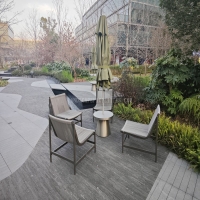Welcome to the website for landscape facilities products and knowledge.
How does polyethylene’s resistance to deformation suit cantilevered designs?
Polyethylene’s unique mechanical properties make it an excellent choice for cantilevered designs, where resistance to deformation is critical. Unlike rigid materials that may crack under stress, polyethylene flexes without permanent distortion, distributing load evenly across the structure. This elasticity allows cantilevered elements—such as shelves, beams, or overhangs—to withstand dynamic forces like wind or weight shifts while maintaining structural integrity.
High-density polyethylene (HDPE) is particularly favored for its high tensile strength and low creep tendency, ensuring long-term stability. Its molecular structure absorbs energy rather than transferring stress points, reducing fatigue over time. Additionally, polyethylene’s lightweight nature simplifies installation without compromising strength, making it cost-effective for architectural and industrial applications.
Engineers leverage these traits in bridges, signage, and furniture, where cantilevered sections require durability and flexibility. Environmental resistance further enhances its suitability, as polyethylene won’t corrode or degrade under moisture or UV exposure. By balancing rigidity and pliability, polyethylene redefines the limits of cantilevered innovation.
Related search:

Recommendation
Metal structure rattan chair without armrests for single person, with woven seat and backrest.